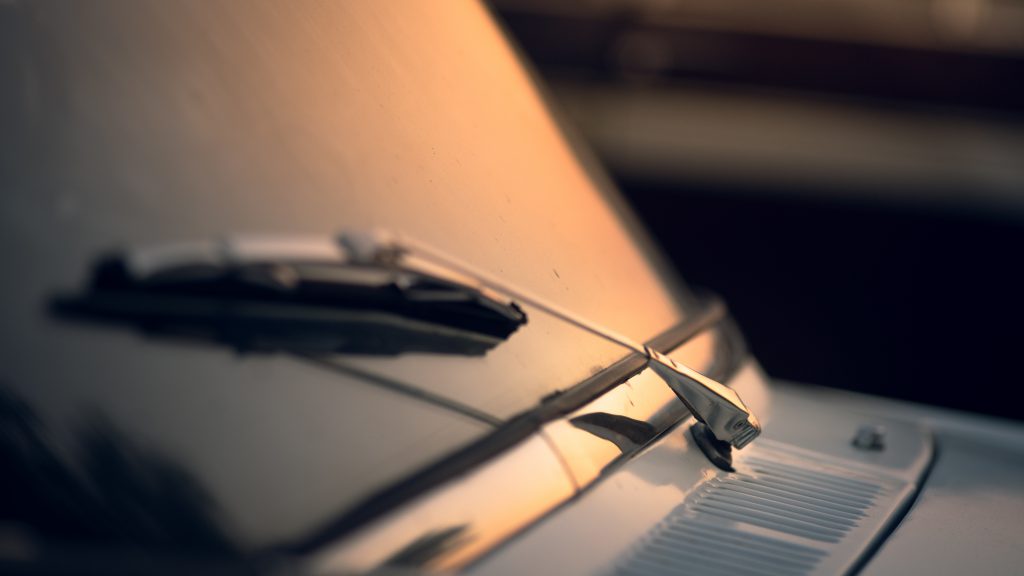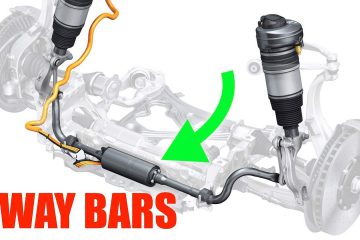Your car is a big investment, and it’s important to take care of it. Regular car care can help to prevent costly repairs and extend the life of your car. In this blog post, we will discuss common car problems, DIY fixes, and preventive tips for smooth rides.
From the frustration of a dead battery to the inconvenience of a flat tire, we’ll explore the root causes of these issues and provide step-by-step instructions on how to resolve them. We’ll also tackle engine problems, transmission troubles, and brake issues, offering insights on when to seek professional help and when you can take matters into your own hands.
But that’s not all—our focus extends beyond troubleshooting. We’ll share invaluable preventive tips to help you steer clear of potential car problems in the first place. Discover the importance of regular oil changes, the significance of maintaining proper tire pressure, and the benefits of scheduling routine servicing for your vehicle. We’ll even shed light on the impact of safe driving habits in prolonging the lifespan of your car’s components.
Our goal is to empower you with the knowledge and resources needed to keep your vehicle in prime condition. Whether you’re a seasoned car enthusiast or a novice driver, this blog is your go-to resource for all things related to car care.
So fasten your seatbelt and get ready to embark on a journey of automotive expertise. Together, we’ll navigate the winding roads of car maintenance, ensuring you enjoy smooth rides and worry-free adventures for years to come. Let’s rev up the engine of knowledge and drive toward car care mastery!
We will cover the following topics:
- Common car problems
- DIY fixes
- Preventive tips
Here are some common car problems and how to fix them:
- Dead battery: A dead battery is one of the most common car problems. It can be caused by a number of things, such as leaving the lights on, a parasitic drain, or a bad alternator. To fix a dead battery, you can jumpstart it or have it towed to a mechanic.
- Flat tire: A flat tire is another common car problem. It can be caused by a number of things, such as hitting a pothole, running over a nail, or simply wearing out the tire. To fix a flat tire, you can change it yourself or have it towed to a mechanic.
- Engine problems: Engine problems can be caused by a number of things, such as low oil, bad spark plugs, or a faulty fuel injector. If you are experiencing engine problems, it is important to take your car to a mechanic to have it diagnosed and repaired.
- Transmission problems: Transmission problems can be caused by a number of things, such as low transmission fluid, worn-out gears, or a faulty transmission control module. If you are experiencing transmission problems, it is important to take your car to a mechanic to have it diagnosed and repaired.
- Brake problems: Brake problems can be caused by a number of things, such as low brake fluid, worn-out brake pads, or a faulty brake caliper. If you are experiencing brake problems, it is important to take your car to a mechanic to have it diagnosed and repaired.
These are just a few of the most common car problems. If you are experiencing any of these problems, it is important to take your car to a mechanic to have it diagnosed and repaired. By following these tips, you can help to keep your car running smoothly and prevent costly repairs.
DIY Fixes
There are a number of common car problems that you can fix yourself. Here are a few examples:
Changing a flat tire
Changing a flat tire is a relatively easy task that can be learned relatively easily. Here are the steps on how to change a flat tire:
- Pull over to the side of the road in a safe location. Turn on your hazard lights and set the parking brake.
- Use wheel wedges or large rocks to block the tires on the opposite side of the car. This will help to prevent the car from rolling while you are changing the tire.
- Locate your spare tire and jack. The spare tire is usually located in the trunk of your car. The jack is usually located in the trunk or under the car.
- Remove the hubcap or wheel cover from the flat tire. This can usually be done by hand.
- Loosen the lug nuts on the flat tire. This can be done with a lug wrench.
- Place the jack under the car near the flat tire. Follow the instructions that came with your jack to determine the correct location.
- Use the jack to raise the car until the flat tire is off the ground. Be careful not to raise the car too high or you could damage the car.
- Remove the lug nuts and take off the flat tire. Be careful not to drop the lug nuts.
- Put the spare tire on the car and hand-tighten the lug nuts.
- Lower the car and remove the jack.
- Tighten the lug nuts with the lug wrench. Be sure to tighten them evenly.
- Put the hubcap or wheel cover back on the spare tire.
- Put away your tools and drive away.
It is important to note that these are just general steps and the specific steps may vary depending on the make and model of your car. It is always a good idea to consult your owner’s manual for specific instructions on how to change a flat tire.
Here are some safety tips to keep in mind when changing a flat tire:
- Always wear safety glasses when changing a flat tire. This will protect your eyes from flying debris.
- Never work under a car that is not properly supported. The car could fall and seriously injure you.
- Be careful not to drop the lug nuts. They could fall into the engine compartment and cause damage.
- If you are not comfortable changing a flat tire, you can always call roadside assistance. They will be able to change the tire for you.
Checking and adding tire pressure
Checking and adding tire pressure is an important part of car maintenance. It can help to prevent flats, improve fuel economy, and extend the life of your tires.
Here are the steps on how to check and add tire pressure:
- Park your car on a level surface.
- Remove the tire pressure caps from all four tires.
- Press the tire pressure gauge firmly onto the valve stem of one of the tires.
- Read the tire pressure gauge. The recommended tire pressure is usually listed on the inside of the driver’s side door.
- If the tire pressure is low, add air until it reaches the recommended pressure.
- Repeat steps 3-5 for all four tires.
- Replace the tire pressure caps.
Here are some of the dangers of driving with low tire pressure:
- Increased risk of flats.
- Reduced fuel economy.
- Increased wear and tear on tires, suspension, and steering components.
- Increased risk of accidents.
If you notice that your car is pulling to one side, vibrating, or making strange noises, it could be a sign of low tire pressure. It is important to check your tire pressure regularly and add air as needed.
Adding oil
Adding oil to your car is a relatively easy task that can be learned relatively easily. Here are the steps on how to add oil to your car:
- Park your car on a level surface.
- Turn off the engine and let it cool down.
- Open the hood of your car.
- Locate the oil filler cap. It is usually a black or silver cap with an oil can symbol on it.
- Remove the oil filler cap.
- Add oil to the engine using a funnel. The type of oil you need will be specified in your car’s owner’s manual.
- Replace the oil filler cap.
- Start the engine and let it run for a few minutes.
- Check the oil level again to make sure it is at the correct level.
Here are some tips for adding oil to your car:
- Use the correct type of oil. The type of oil you need will be specified in your car’s owner’s manual.
- Do not overfill the engine with oil. Overfilling the engine with oil can cause damage.
- Check the oil level regularly. The oil level should be checked at least once a month.
- Change the oil and filter regularly. The oil and filter should be changed every 3,000 to 5,000 miles.
Here are some of the dangers of driving with low oil:
- Engine damage. Low oil levels can cause the engine to overheat and damage the pistons, bearings, and other components.
- Reduced fuel economy. Low oil levels can cause the engine to work harder, which can reduce fuel economy.
- Increased emissions. Low oil levels can cause the engine to burn oil, which can increase emissions.
If you notice that your car is making strange noises, smoking, or losing power, it could be a sign of low oil. It is important to check your oil level regularly and add oil as needed.
Changing the air filter
Changing the car air filter is a relatively easy task that can be learned relatively easily. Here are the steps on how to change the car air filter:
- Park your car on a level surface.
- Turn off the engine and let it cool down.
- Open the hood of your car.
- Locate the air filter housing. It is usually a black plastic box with a large hose attached to it.
- Open the air filter housing. There may be clips or screws that hold it closed.
- Remove the old air filter. Dispose of it properly.
- Insert the new air filter into the housing. Make sure it is oriented correctly.
- Close the air filter housing.
- Start the engine and let it run for a few minutes.
- Check the air filter again to make sure it is seated properly.
Here are some tips for changing the car air filter:
- Check the air filter every time you change your oil. The air filter should be changed every 12,000 to 15,000 miles.
- Buy a high-quality air filter. A good air filter will help to improve your car’s fuel economy and performance.
- When changing the air filter, be careful not to damage the air intake hose. The air intake hose is responsible for delivering air to the engine. If the air intake hose is damaged, it can cause the engine to run poorly.
If you notice that your car is losing power, idling rough, or making strange noises, it could be a sign of a dirty air filter. It is important to check your air filter regularly and change it as needed.
By following these tips, you can help to keep your car’s engine running smoothly and prevent costly repairs.
Cleaning the windshield wipers
Cleaning your windshield wipers is a simple way to improve your visibility and keep your car in good condition. Here are the steps on how to clean your windshield wipers:
- Park your car in a well-lit area.
- Turn off the engine and let it cool down.
- Lift the wipers off the windshield.
- Use a soft cloth or sponge to wipe away any dirt, debris, or bird droppings from the blades.
- If the blades are still dirty, you can use a mild soap and water solution to clean them.
- Rinse the blades with clean water and dry them with a soft cloth.
- Lower the wipers back onto the windshield.
Here are some tips for cleaning your windshield wipers:
- Clean your wipers regularly. Wipers should be cleaned at least once a month, or more often if you live in an area with a lot of dirt or debris.
- Use a soft cloth or sponge. Do not use anything abrasive, as this could damage the rubber blades.
- Do not use harsh chemicals. Mild soap and water are all that is needed to clean the blades.
- Be careful not to damage the wiper arms. The wiper arms are made of metal and can be easily bent if you are not careful.
By following these tips, you can help to keep your windshield wipers in good condition and extend their life.
Here are some of the dangers of driving with dirty windshield wipers:
- Reduced visibility. Dirty wipers can streak and smear, which can reduce visibility and make it difficult to see the road.
- Accidents. Reduced visibility can lead to accidents.
- Wiper damage. Dirty wipers can put extra strain on the wiper motor, which can lead to premature wear and tear.
If you notice that your windshield wipers are not working properly, it is important to clean them or replace them as soon as possible.
Preventive Tips
The best way to keep your car running smoothly is to prevent problems from happening in the first place. Here are a few preventive tips:
Here are some tips for preventing common car problems:
- Get regular oil changes. Oil changes help to keep your engine clean and lubricated, which can help to prevent engine problems.
- Check your tire pressure regularly. Low tire pressure can cause your tires to wear out prematurely and can also increase your risk of a flat tire.
- Have your car serviced regularly. A regular service can help to identify and fix potential problems before they cause major damage.
- Drive safely. Avoid aggressive driving, such as speeding and hard braking. This can help to prevent wear and tear on your car’s components.
By following these tips, you can help to prevent common car problems and keep your car running smoothly for years to come. If you are not comfortable fixing your car yourself, you can always take it to a mechanic.





